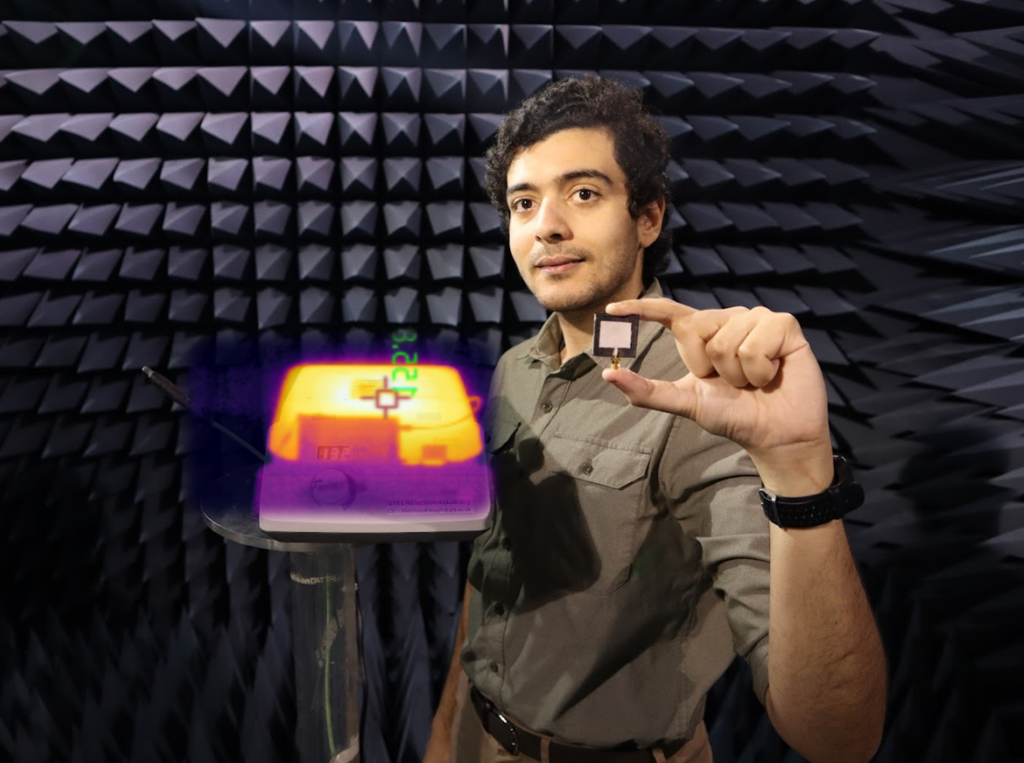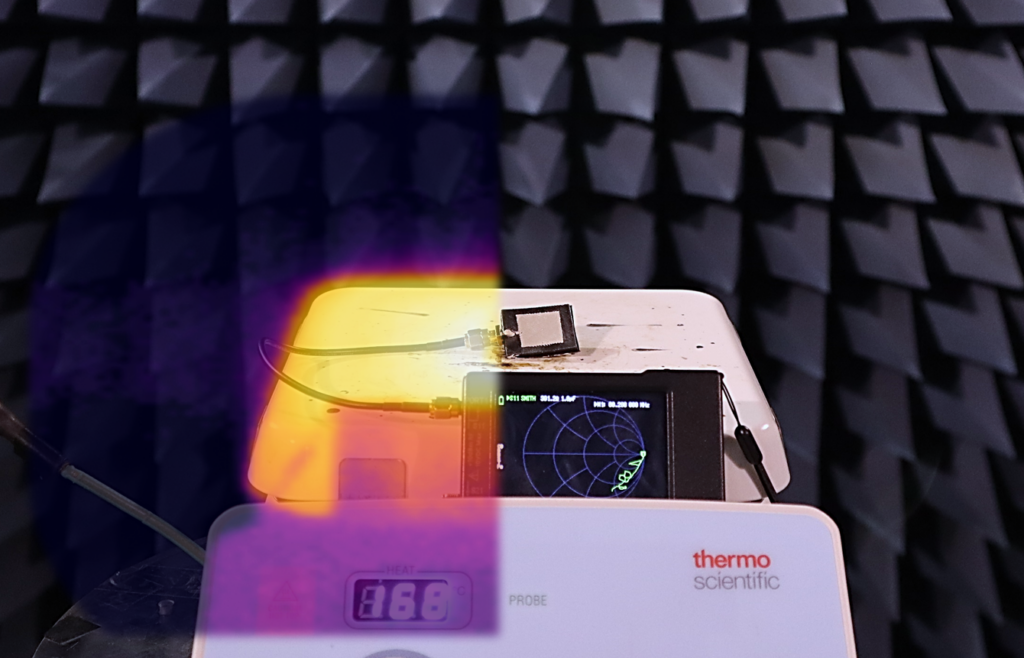Researchers from the University of Glasgow, University of Southampton, and Loughborough University have developed an innovative flexible temperature sensor utilizing microwaves and 3D printing technology. As detailed in an article for Nature Communications, the team presents this novel sensor. While thermistors are widely used in 3D printing for measuring temperature, the uniqueness of this thermistor is that it is radio frequency (RF)-enabled. What’s more, the RF signal itself varies in response to changes in temperature.
The sensor itself boasts the remarkable ability to communicate with an external unit without requiring its own power source, enabling precise temperature readings. This feature is complemented by the sensor’s flexibility; it can be bent and stretched while maintaining functionality. Impressively, it is capable of measuring temperatures ranging from 30°C to over 200°C, which broadens its applicability significantly compared to traditional thermistors. This wide temperature range offers notable manufacturing and production advantages. The sensor’s versatility suggests potential applications where it could replace multiple sensors or be utilized in environments typically unsuitable for conventional thermistors.
The form factor of the device can also be changed with 3D printing. They successfully demonstrated the ability to alter the shape of the sensor into various forms, enhancing its potential for integration into electronics and other devices. This capability to customize its shape to fit different areas and to be shape-efficient could lead to more frequent use of this sensor compared to more rigid, traditionally shaped sensors.
“Sensors are the main interface between the analogue world and smart devices. To communicate real-world changes in measurements like temperature or humidity to wireless smart devices, those measurements first need to be digitized. We designed a simple soft composite using common silicone and carbon fibers, which can be easily moulded into any shape. These skin-like substrates could be used to design antennas over large areas, which can then radiate signals that are highly sensitive to temperature changes. Many researchers have used RF and microwave devices to measure liquid formulations, temperature, humidity, and other physical and chemical parameters. However, this level of sensitivity has not been demonstrated before,” stated lead author Mahmoud Wagih.
The sensor developed by Mahmoud Wagih’s team is constructed from polydimethylsiloxane (PDMS) and short strand carbon fiber, materials known for their flexibility and durability, respectively. This composition allows for the sensors to be not only adapted to specific shapes but also to be utilized in broader areas. It could potentially be integrated into everyday objects, such as becoming part of a cellphone’s housing while also serving as a temperature sensor. Additionally, it could be woven into larger mats to monitor temperature variations across a plot of soil. The sensor could be incorporated into clothing or embedded in carbon fiber reinforced plastic components (CFRP). This would enable it to act as an extensive temperature sensor network, ideal for applications like monitoring the entire wing of a drone. The fiber could potentially be stretched over a 1000 times and bent 20,000 times while continuing to function.
Given its wide range of applications and seemingly straightforward construction, this sensor shows strong potential as a commercially viable product. If the components can be produced at scale, a single production line might be capable of generating a high volume of these sensors, making it an efficient manufacturing process. The adaptability afforded by 3D printing and other techniques means these sensors can be customized to fit a myriad of devices and scenarios. This fusion of high-volume manufacturing and cost-effective customization through 3D printing positions the sensor as a highly adaptable and practical solution across diverse scenarios and applications.
Subscribe to Our Email Newsletter
Stay up-to-date on all the latest news from the 3D printing industry and receive information and offers from third party vendors.
Print Services
Upload your 3D Models and get them printed quickly and efficiently.
You May Also Like
Titomic Opens New U.S. Facility in Huntsville to Boost 3D Printing for Defense
Australian company Titomic (ASX: TTT) has expanded into Huntsville, Alabama, opening a new U.S. facility that brings its advanced metal manufacturing technology closer to key defense and aerospace hubs. The...
3D Printing News Briefs, May 31, 2025: Project Call, Consortium, Certification, & More
We’re starting with the latest America Makes Project Call in today’s 3D Printing News Briefs, and a consortium to promote the adoption of additive manufacturing has been founded in Spain....
3D Printing News Briefs, May 24, 2025: Commercialization, Acquisition, & Facilities
We’re all business in today’s 3D Printing News Briefs! Titomic and nuForj have announced a strategic partnership, and AMETEK is acquiring FARO Technologies. CDG 3D Tech opened an Additive Manufacturing...
3D Printing News Briefs, May 21, 2025: Medical Training Models, Connectors, Makerspace, & More
We’re starting with research and medical in today’s 3D Printing News Briefs, as a research team from Caltech is using sound to 3D print deep inside living tissue, and rural...



































